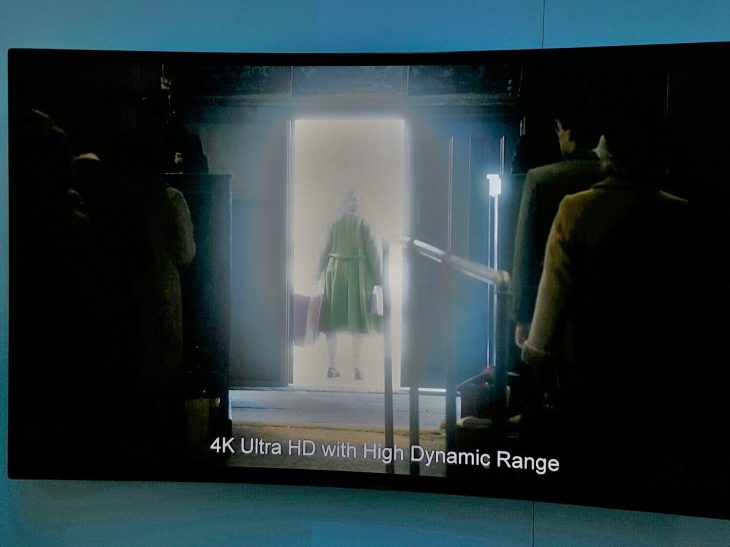
LAS VEGAS – Here at CES, broadcasters are giving attendees their first ever look at how 4K HDR video looks when broadcast over-the-air. Two local Las Vegas television stations, KHMP and KSNV, are broadcasting 4K content to LG and Samsung Ultra HD (UHD) TVs.
The broadcasts mark the first major display of transmitted 4K programming in the U.S. utilizing the new ATSC proposed standards. Since ATSC 3.0 broadcasts will be IP-based, it is expected to allow for not only the broadcast of improved quality 4K Ultra HD TV signals, but also mobile TV and interactive content, which could be transformative for broadcasters who choose to invest in upgrades.
A number of manufacturers here at CES have also announced plans to bring to market Ultra HD Blu-ray players this year which should further boost the amount of available 4K content which, to this point, has been largely limited to some original programming from Netflix, Amazon and YouTube. In Canada, Rogers has made the largest 4K commitment so far, with Bell’s Discovery Channel adding to the Ultra HD content bucket (albeit only for Samsung UHD TVs for now) with an announcement today.
However, analysts point out that technological advancements in 4K distribution won’t necessarily translate into consumer adoption. Dan Rayburn, analyst with research and consulting firm Frost & Sullivan, says that for 4K to succeed a business model needs to be first created. He notes that Netflix reportedly paid $100 million to create the first two seasons of House of Cards in 4K and questions how production costs will slow the creation of future 4K content.
Samsung, Sinclair Broadcast Group, ONE Media, Pearl TV and TeamCast are demonstrating the broadcast and receiving capabilities of ATSC 3.0. The demonstration highlights reception of 4K Ultra HD HDR content using the ATSC 3.0 candidate standard in a live transmission originating from a local Sinclair broadcast TV station to an SUHD TV with ATSC 3.0 receiver at the Samsung booth.
LG is showing 4K Ultra HD HDR from Las Vegas Channel 18 KHMP-TV’s transmitter on Black Mountain, received for the first time on LG’s new ATSC 3.0-enabled OLED 4K TV receivers at the Las Vegas Convention Center.
Last month the Advanced Television Systems Committee (ATSC) announced ten next-generation standards coming to ATSC 3.0, and 4K was included, providing the A/341 video standard that specifies HEVC (H.265) video compression for the display of 4K Ultra HDTV.
In a newly released memo, ATSC president Mark Richer wrote that in the coming months he expects that broadcasters will ask the FCC to authorize use of ATSC 3.0 for terrestrial television broadcasting in the United States. “CES marks the beginning of an important new phase for ATSC 3.0 as manufacturers and broadcasters begin demonstrating products and services based on the core ATSC 3.0 Candidate Standards adopted last year. The lion’s share of the standard has been completed and remaining items, like audio and interactivity, will be done in the months ahead. We’re on target to finalize the entire suite of ATSC 3.0 standards for next-gen television broadcasting this year,” he wrote.
He added the ATSC 3.0 proposed standards that are already approved for the Physical Layer transmission system – as well as other key elements like Internet Protocol transport, video compression, closed captions, electronic service guides and second-screen services – establish a solid foundation for real-world implementations, field tests and demonstrations in the months ahead.




